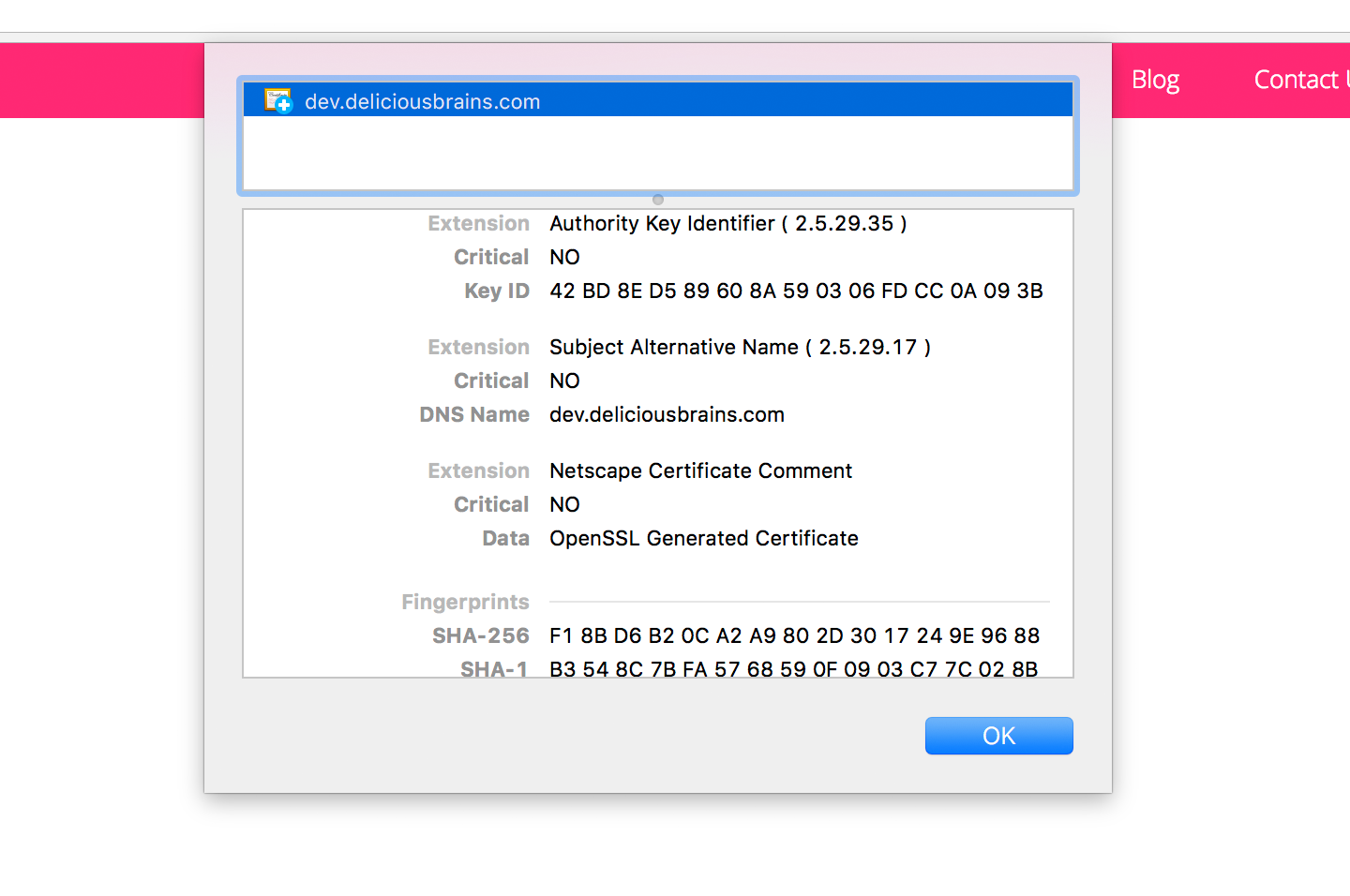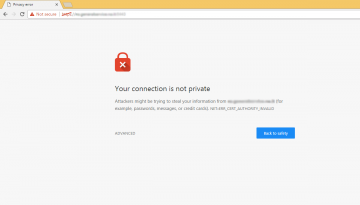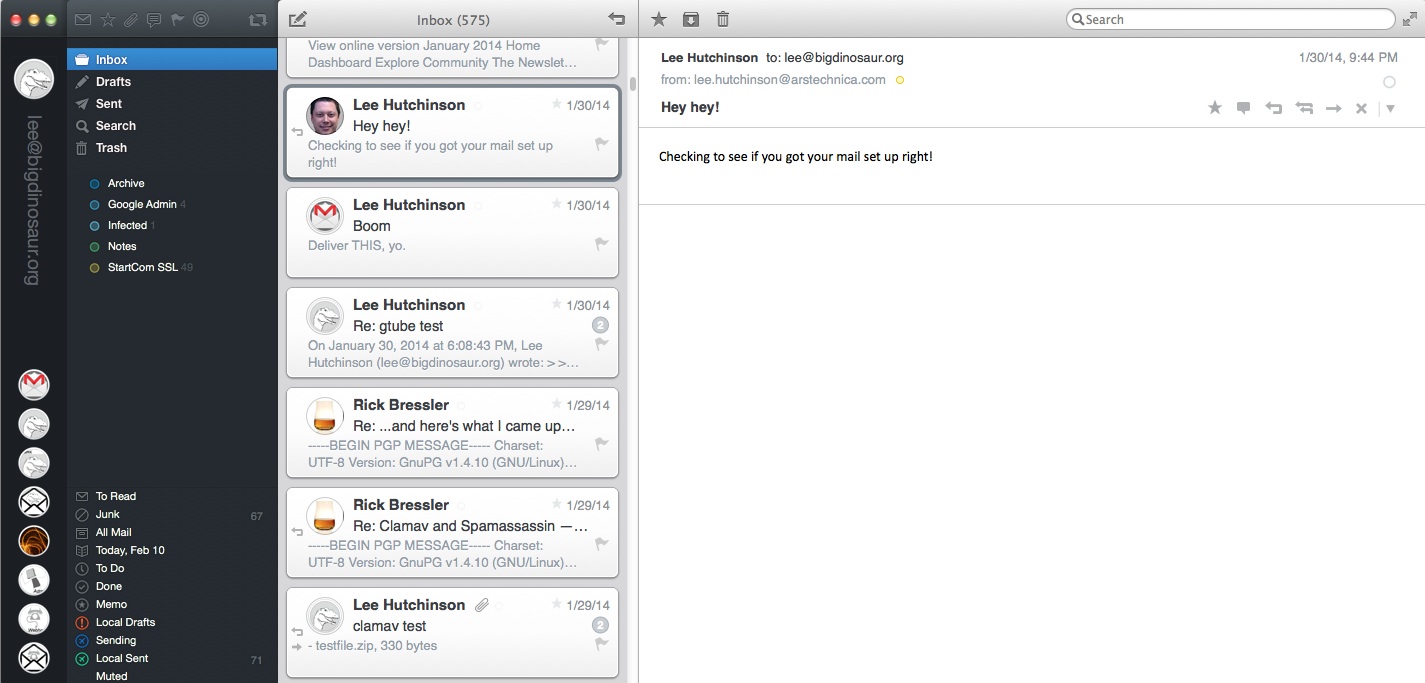

- #Chrome localhost certificate osx 2017 how to
- #Chrome localhost certificate osx 2017 for mac
- #Chrome localhost certificate osx 2017 install
If you're on a mac and not seeing the export tab or how to get the certificate this worked for me:Ĭlick the lock before the Go to the "Connection" tabĭrag that little certificate icon do your desktop (or anywhere).ĭouble click the. Run Chrome with -auto-ssl-client-auth parameter
#Chrome localhost certificate osx 2017 install
Sudo yum install nss-tools # on Fedora, Red Hat, etc.Īs a bonus, you can use the following handy scripts:Ĭertutil -d sql:$HOME/.pki/nssdb -A -t "P," -n $1 -i $1Ĭertutil -d sql:$HOME/.pki/nssdb -L # add '-h all' to see all built-in certsĮcho QUIT | openssl s_client -connect $1:443 | sed -ne '/BEGIN CERT/,/END CERT/p' Sudo apt-get install libnss3-tools # on Ubuntu Please also make sure that you have libnss3-tools, before you can use above commands. If it still doesn't work, you could be affected by this bug: To list all your certificates, run the following command: Now, the following command will add the certificate (where YOUR_FILE is your exported file):Ĭertutil -d sql:$HOME/.pki/nssdb -A -t "P," -n YOUR_FILE -i YOUR_FILE If you're using Linux, you can also follow this official wiki pages: The selected store should be Trusted Root Certification Authorities. Select Place all certificates in the following store. and select the certificate file you saved earlier, then click Next. Click Next to get to the File to Import screen.Ĭlick Browse. This opens the Certificate Import Wizard. Under HTTPS/SSL, click Manage certificates.Ĭlick the Trusted Root Certification Authorities tab, then click the Import.īutton. Open Chrome settings, scroll to the bottom, and click Show advanced settings.

This will open the Certificate Export Wizard, click Next to get to the Export File Format screen.Ĭhoose DER encoded binary X.509 (.CER), click NextĬlick Browse. On the site you want to add, right-click the red lock icon in the address bar:Ĭlick the tab labeled Connection, then click Certificate InformationĬlick the Details tab, the click the button Copy to File.

#Chrome localhost certificate osx 2017 for mac
UPDATE 02/2016: Better Instructions for Mac Users Can be Found Here. If prompted certification store, choose Trusted Root Certificate AuthoritiesĬheck all boxes and click OK. Click the Authorities tab > Import and choose the file to which you exported the certificate, and make sure to choose PKCS #7, single certificate as the file type. Then follow my original instructions to get to the Manage Certificates page. Choose PKCS #7, single certificate as the file format. On the page with the untrusted certificate ( is crossed out in red), click the lock > Certificate Information.Ĭlick the Details tab > Export. You should get the nice green lock on your pages now.ĮDIT: I tried this again on a new machine and the certificate did not appear on the Manage Certificates window just by continuing from the red untrusted certificate page. Select it, click Edit (NOTE: in recent versions of Chrome, the button is now "Advanced" instead of "Edit"), check all the boxes and click OK. Open up Chrome Settings > Show advanced settings > HTTPS/SSL > Manage Certificates.Ĭlick the Authorities tab and scroll down to find your certificate under the Organization Name that you gave to the certificate. Using Chrome, hit a page on your server via HTTPS and continue past the red warning page (assuming you haven't done this already).


 0 kommentar(er)
0 kommentar(er)
